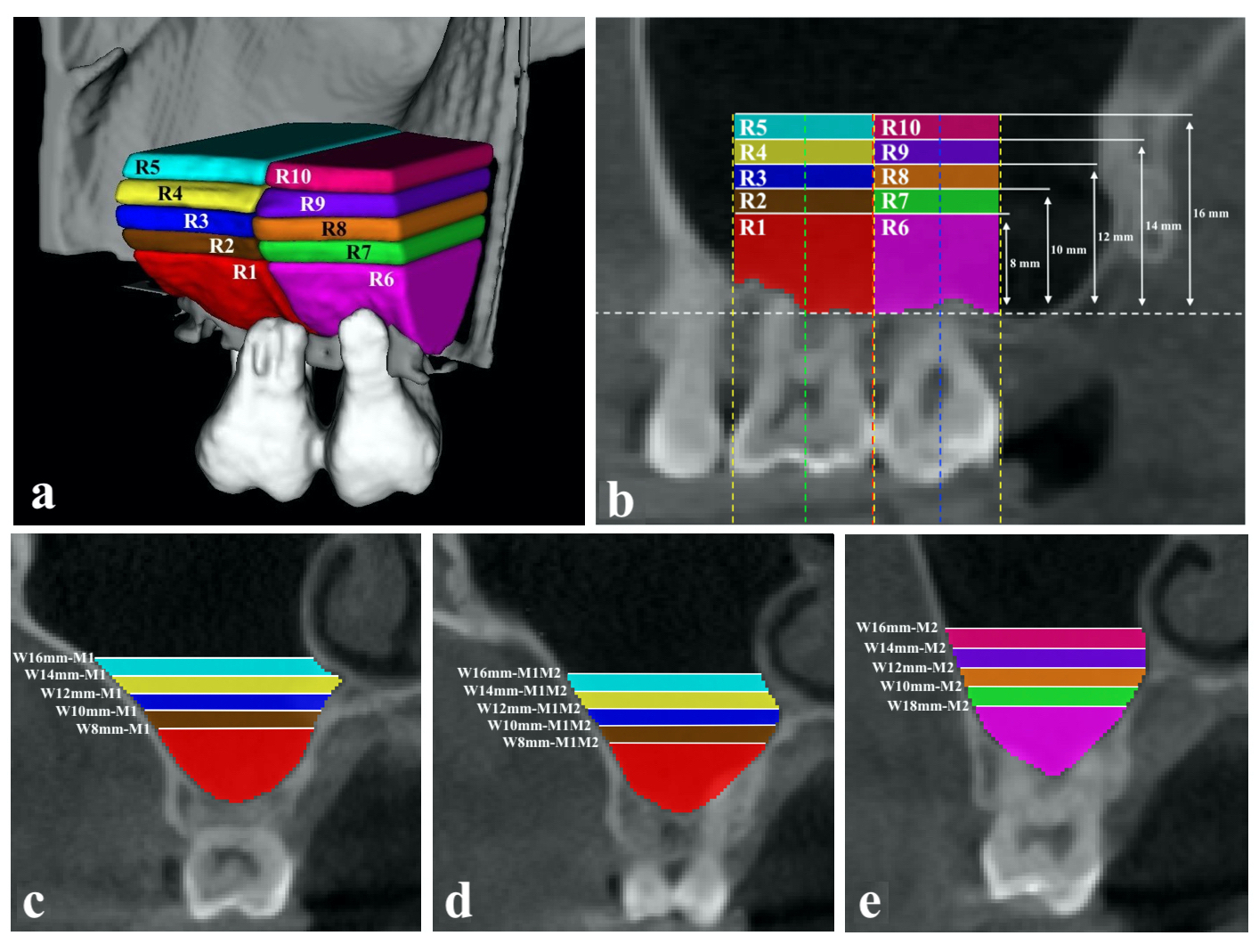IADR Abstract Archives
Patient-Specific Estimation of Bone-Graft Volume for Sinus Augmentation Using CBCT
Objectives: To estimate the bone-graft volumes needed for sinus floor elevation (SFE) for various elevation heights at the maxillary first (MM1) and/or second molar (MM2) sites using cone-beam computed tomography (CBCT), and to develop bone-graft volume prediction models based on the augmentation site, elevation height, and sinus width.
Methods: CBCT scans with a medium-to-large field-of-view, performed at the Diagnostic Imaging Clinic, HKU Faculty of Dentistry, were screened for inclusion. Ten defined regions, above the MM1 and MM2 sites, in each maxillary sinus were semi-automatically segmented from the included CBCTs, and their volumes were automatically measured using the ITK-SNAP program. The sinus widths at the height ranging between 8-16mm from the sinus floor were measured at the the MM1 and MM2 sites, respectively. Multiple linear regression analyses were performed to evaluate the association of the bone-graft volume estimated for SFE at different augmentation sites with elevation height and sinus width.
Results: In total, 224 sinuses on 133 scans were included. For the same elevation height, the mean graft volume estimated for SFE at the MM1 site were greater than that at the MM2 site. The estimated graft volume was significantly associated with elevation height and sinus width (all p-values<0.001). Three prediction models proposed explained 89-91% of the variation in the estimated bone-graft volumes. The mean absolute deviations and absolute percentage deviations between the measured and predicted volumes ranged from 0.12-0.28cm3 and from 9.78-10.62%, respectively.
Conclusions: Elevation height and sinus width are strong predictors of the bone-graft volume. The proposed prediction models may enable more patient-specific estimation of the bone-graft volume needed for SFE, which could facilitate the preparation of an adequate amount of bone-graft to avoid insufficient elevation of the sinus floor, and improve patient-clinician communication about the cost of bone-graft material.
Methods: CBCT scans with a medium-to-large field-of-view, performed at the Diagnostic Imaging Clinic, HKU Faculty of Dentistry, were screened for inclusion. Ten defined regions, above the MM1 and MM2 sites, in each maxillary sinus were semi-automatically segmented from the included CBCTs, and their volumes were automatically measured using the ITK-SNAP program. The sinus widths at the height ranging between 8-16mm from the sinus floor were measured at the the MM1 and MM2 sites, respectively. Multiple linear regression analyses were performed to evaluate the association of the bone-graft volume estimated for SFE at different augmentation sites with elevation height and sinus width.
Results: In total, 224 sinuses on 133 scans were included. For the same elevation height, the mean graft volume estimated for SFE at the MM1 site were greater than that at the MM2 site. The estimated graft volume was significantly associated with elevation height and sinus width (all p-values<0.001). Three prediction models proposed explained 89-91% of the variation in the estimated bone-graft volumes. The mean absolute deviations and absolute percentage deviations between the measured and predicted volumes ranged from 0.12-0.28cm3 and from 9.78-10.62%, respectively.
Conclusions: Elevation height and sinus width are strong predictors of the bone-graft volume. The proposed prediction models may enable more patient-specific estimation of the bone-graft volume needed for SFE, which could facilitate the preparation of an adequate amount of bone-graft to avoid insufficient elevation of the sinus floor, and improve patient-clinician communication about the cost of bone-graft material.

